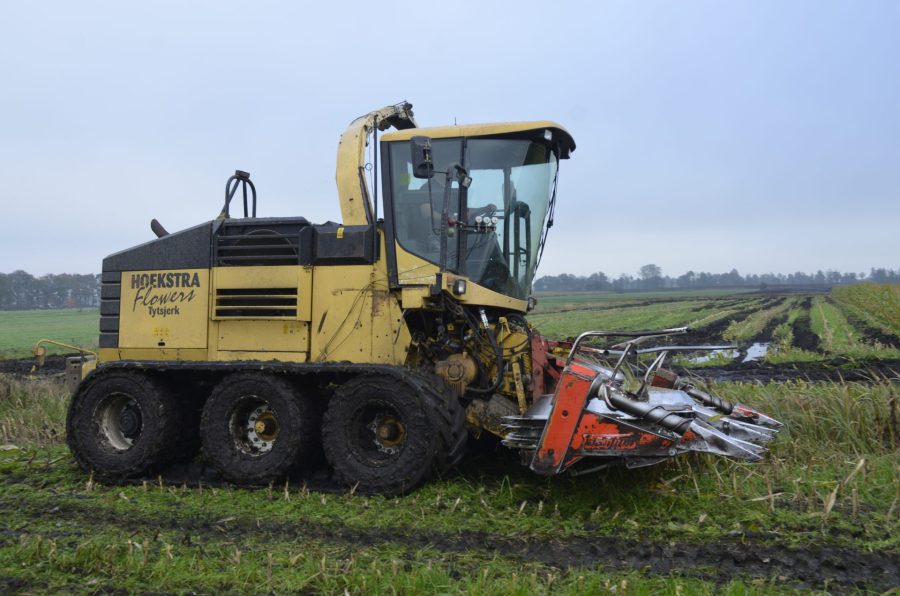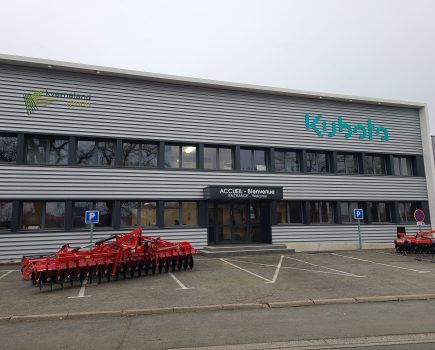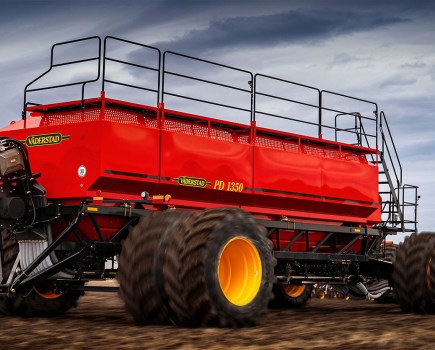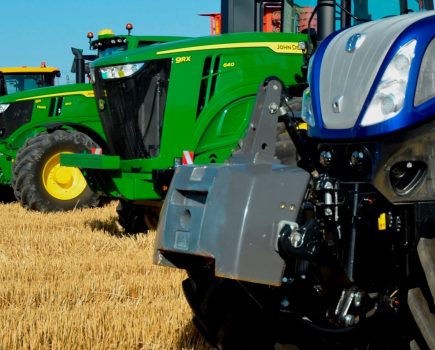While creating misery for many, a wet maize harvest is perfect for a number of Dutch specialists to brush off the cobwebs from their homemade wet-weather solutions, such as this six-wheeled New Holland FX450.
Desperate times require desperate measures, and the base for the six-wheeled rubber-tracked chopper modified by Dutch contractor Hoekstra Flowers (profi 06/2022) was a 1996-built FX450. Bought secondhand in 2007, for the first decade it worked in its standard guise alongside the contractor’s second New Holland forager; an FX38.
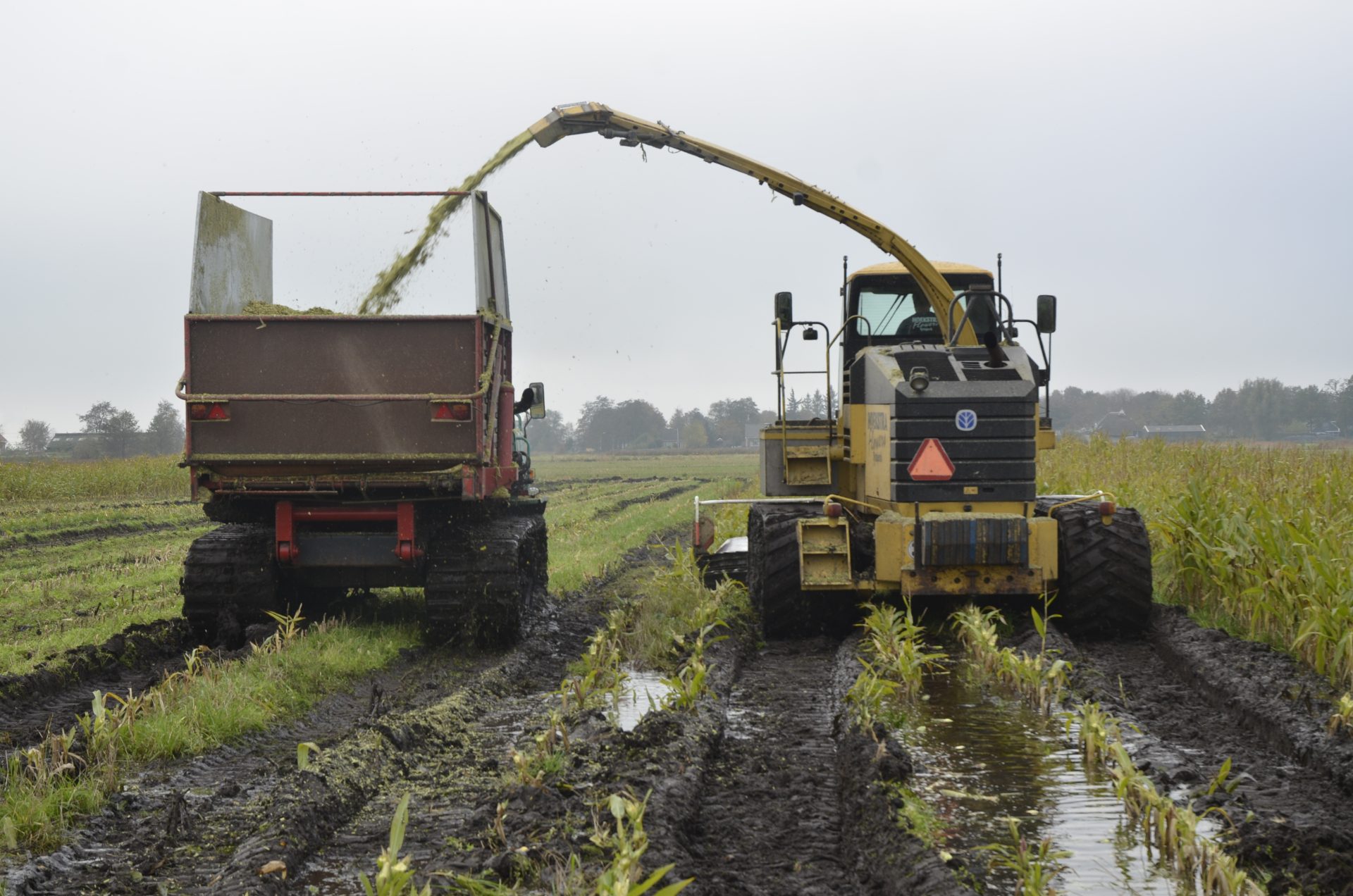
The original plan to sell the 5,000-hour FX450 was axed. Worth just a few thousand Euros, Bouwe Hoekstra, who together with his wife Tjitske, run the contracting business, decided it was best to keep it.
A challenging maize harvest is nothing new in the north of the Netherlands and the contractor had long toyed with the idea of a three-axled six-wheeled solution covered with rubber belts. The low residual value of the 450 provided him with a perfect opportunity to bring his plan to fruition.
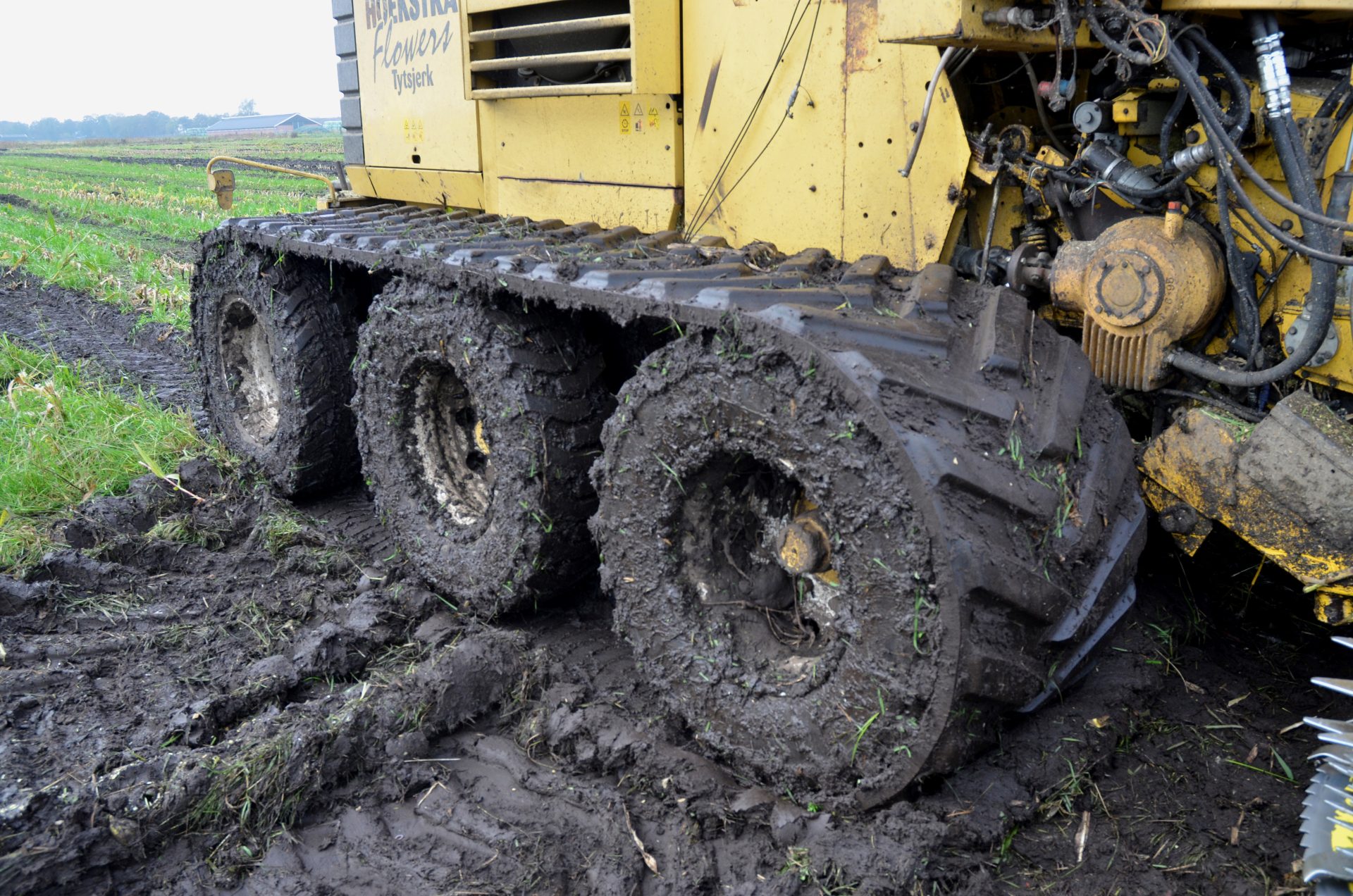
The hydro motors in the rear wheels are from an Agrifac Big Six self-propelled sugar beet harvester. The new front and mid axle are BPW 15.0t capacity used truck/trailer versions. The rear is a Brevini axle. The belts covering the 315/80 R22.5 tyres are from a Challenger 765.
Inspired by the Challenger (65/75/85/95 series), the work saw the removal of the forager’s axles and gearbox. The chassis was then re-worked to make the new sub-frame. The new front and mid axle are BPW 15.0t capacity used truck/trailer versions, the rear Brevini with gearboxes with a hydraulic motor from an Agrifac Big Six self-propelled sugar beet harvester. And in case you were wondering, the belts covering each set of three either side are from a Challenger 765.
Biggest challenge
The steering system was the most challenging part of the project. “We split the oil flow to the left and right wheel motors to steer the forager,” says Bouwe. “The oil from the steering wheel is now connected with two valves, which separate the oil from the main pump to the two wheel motors i.e. when steering to the left the oil flow to the left wheel motor stops, and the oil diverted to the right wheel motor to turn the vehicle.”
The project was finished in time for the 2020 maize harvest, but sadly for the contractor it was dry season and the modified forager spent most of its time parked in the machine shed. Up until mid-September 2021 it looked like it could have been another easy harvest, but the conditions deteriorated quickly and in its new guise the forager was still chopping maize on soggy land well into the second half of November.
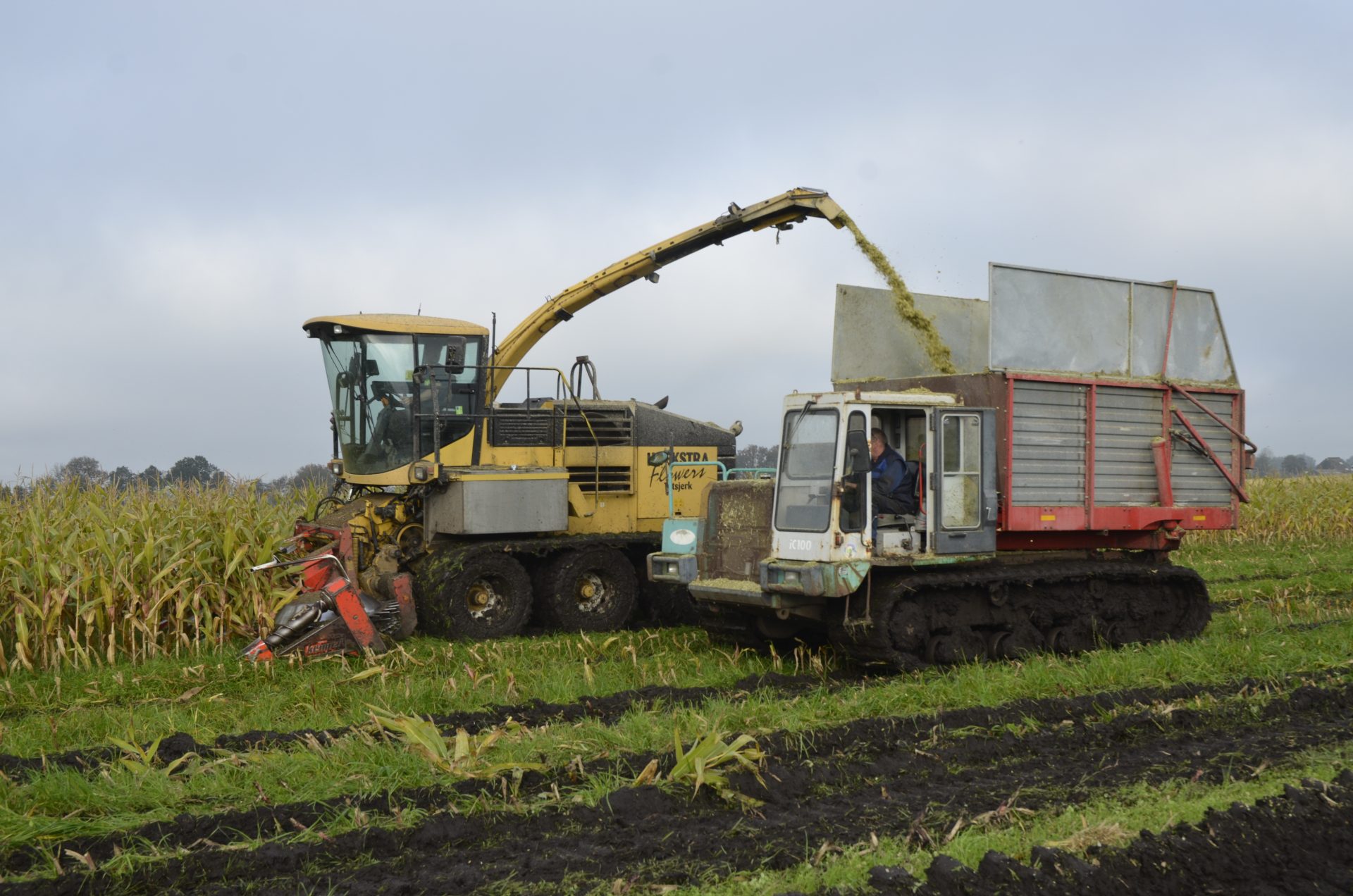
The Dutch contractor modified the subframe and chassis on this 2002-built and 10,000-hour IHI 100 dumper. The capacity of the high-tipping skip is 18m³.
We joined the team on a murky morning in some of the last fields where we were met by the unmistakable bark of the New Holland forager’s a 13-litre (450hp) Iveco engine.
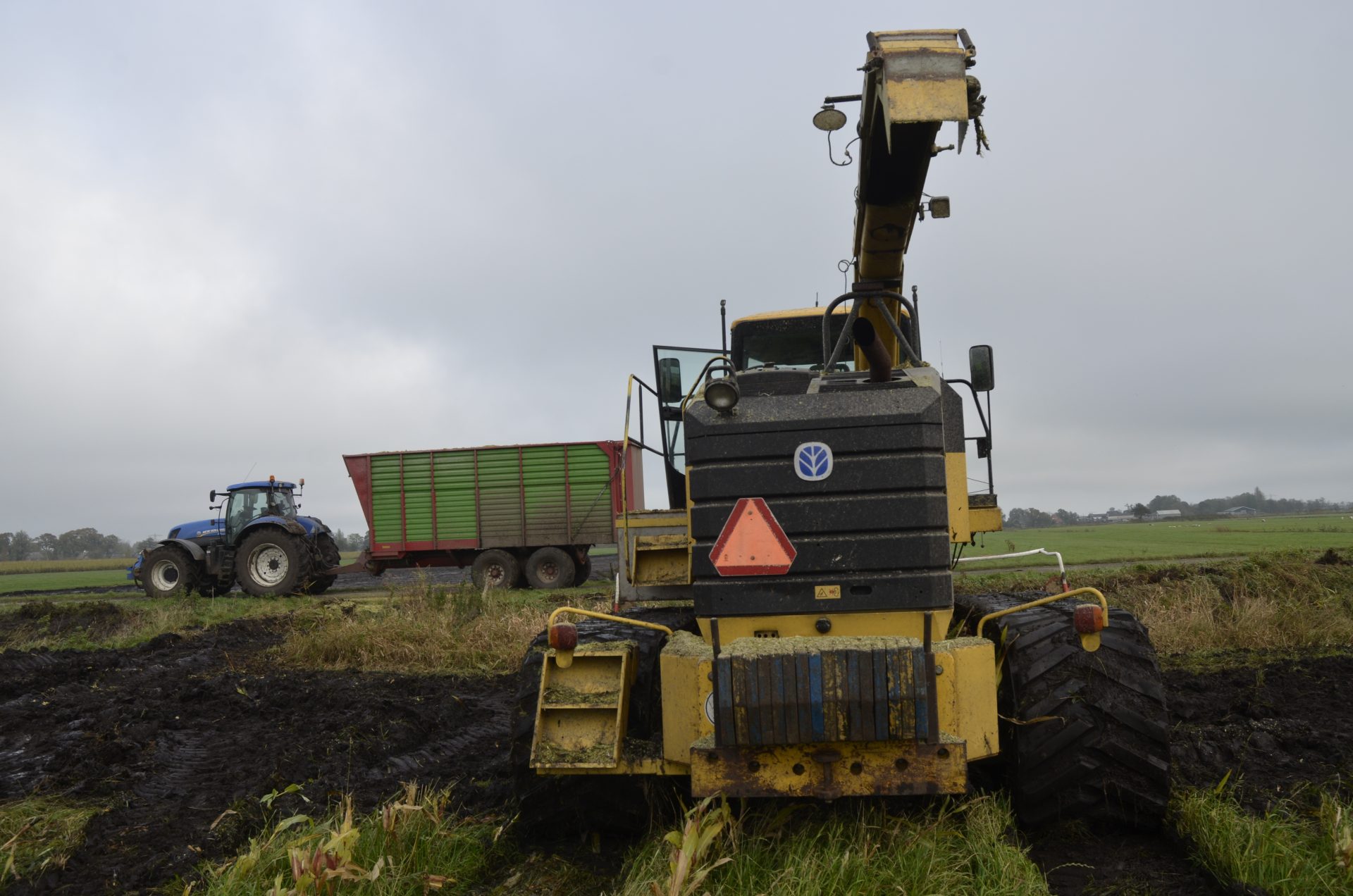
1.5t of additional weight was added to the rear of the New Holland forager.
It is no use having a forager to chop maize in the mud if the trailers cannot keep up, and the wide-tyres of the 2004 TerraGator (200hp Cummins 5.9-litre), which worked alongside a 2002-built and 10,000-hour ICI 100 rubber tracked dumper (18m³), were perfect companions. The high-tipping bodies on both are modified versions gleaned from Taarup 1030 self-loading forage wagons (the contractor used to have six).
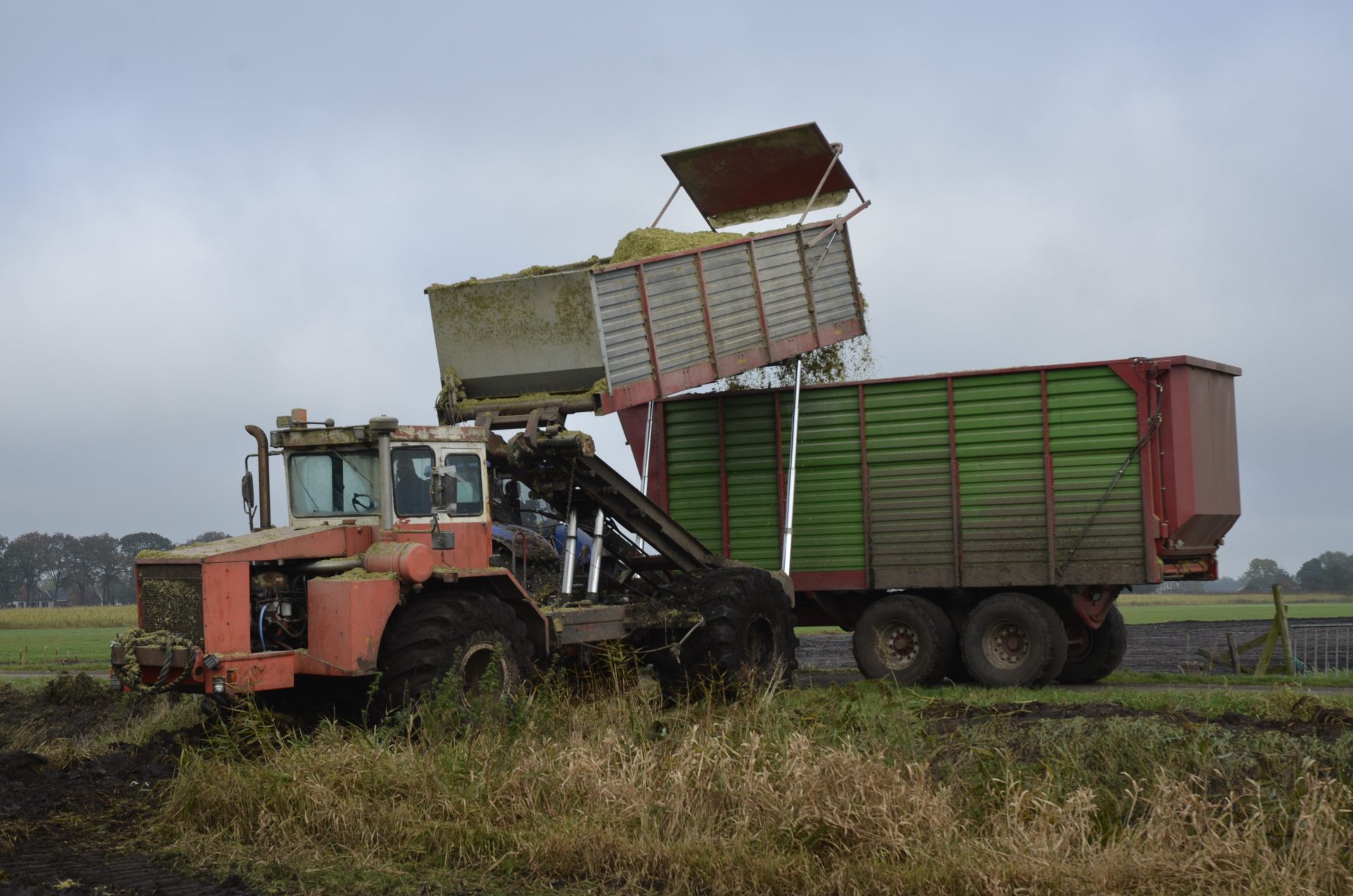
The wide-tyred Cummins powered TerraGator dates from 2004. The high-tipping body was gleaned from a Taarup 1030 self-loading forage wagon. It took the capable contractor around two weeks to add the high-tipping trailer body to the TerraGator. The maximum unloading height is 4.5m.
While everything on the top half of the FX450 is standard, the chassis is completely reworked. It is best to think in terms of the Challenger track drive system. The hydro motors in the rear wheels drive the machine. The hydraulic track tightening system works on the front axle, which can be moved forward by as much as 20cm.
All the engineering work was carried out in the contractor’s workshop. I was curious to know how a former dairy farmer could have acquired so much technical knowledge. Bouwe’s skills stem from college days as an engineering student, after which he returned home to join his parents on the dairy farm. “I enjoyed milking, it gave me plenty of time to think about machines,” he says.
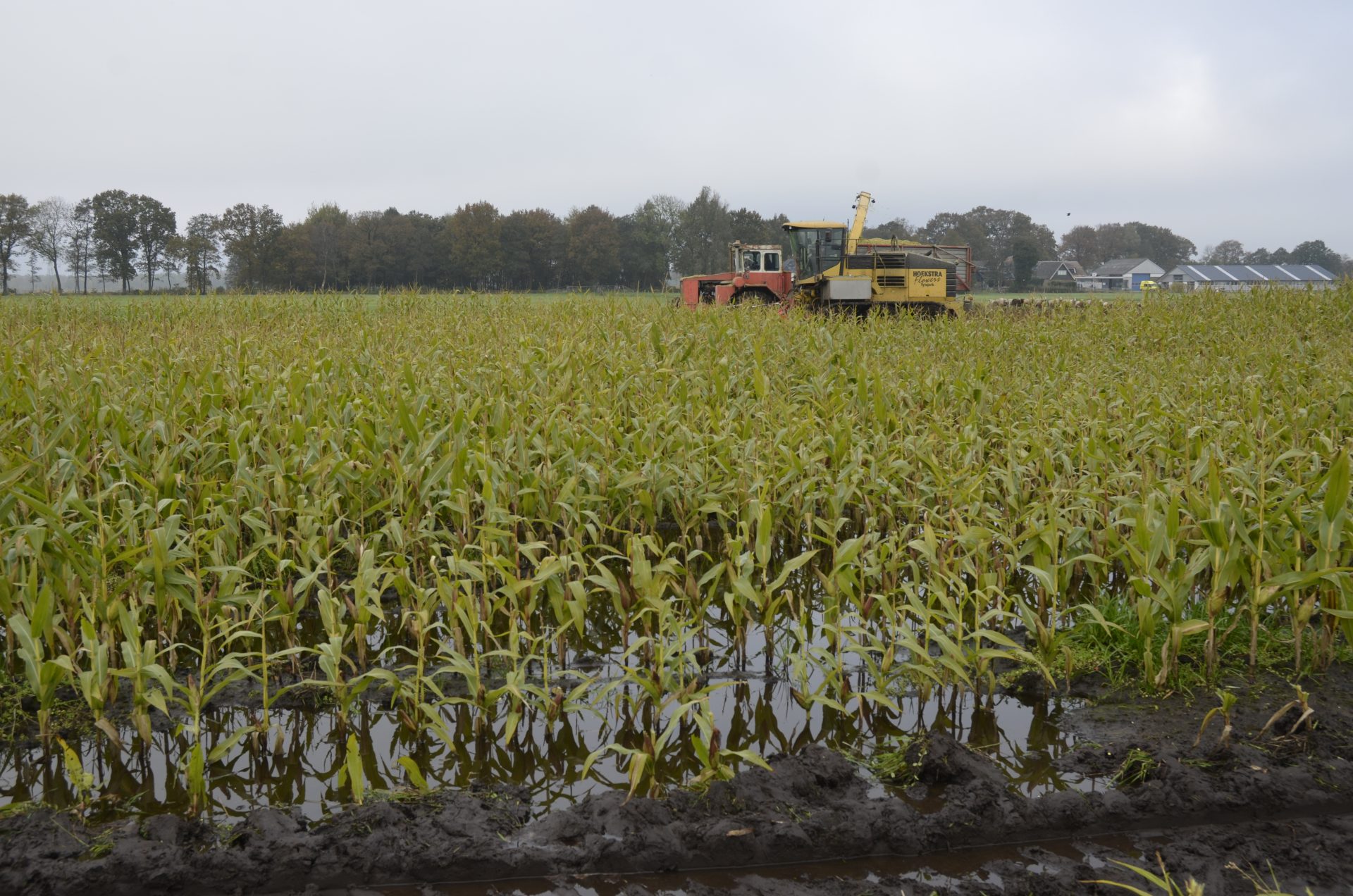
The contractor admits the six-wheeled forager project was not all plain sailing. “For the first few hours in the mud the wheels spun inside the tracks,” he says. The solution was to increase the pressure of the track tensioning system to 110 bar (roughly 11.0t) and swap the tyres for versions for remould excavator versions with a different tread pattern.
The two 76cm-wide x 3.0m-long rubber belts cover a ground contact area of around 4.5m², allowing the light-footed forager to not only negotiated the water-logged land with ease, but also spin around on headlands.
The go anywhere forager and six-row Kemper Champion 4500 successfully harvested 80ha (60 drum hours) in three weeks that would otherwise have been written off. Looking ahead, the 450hp Iveco-powered FX450 is over 25 years old. I asked Mr Hoekstra how much longer he can continue to use it?
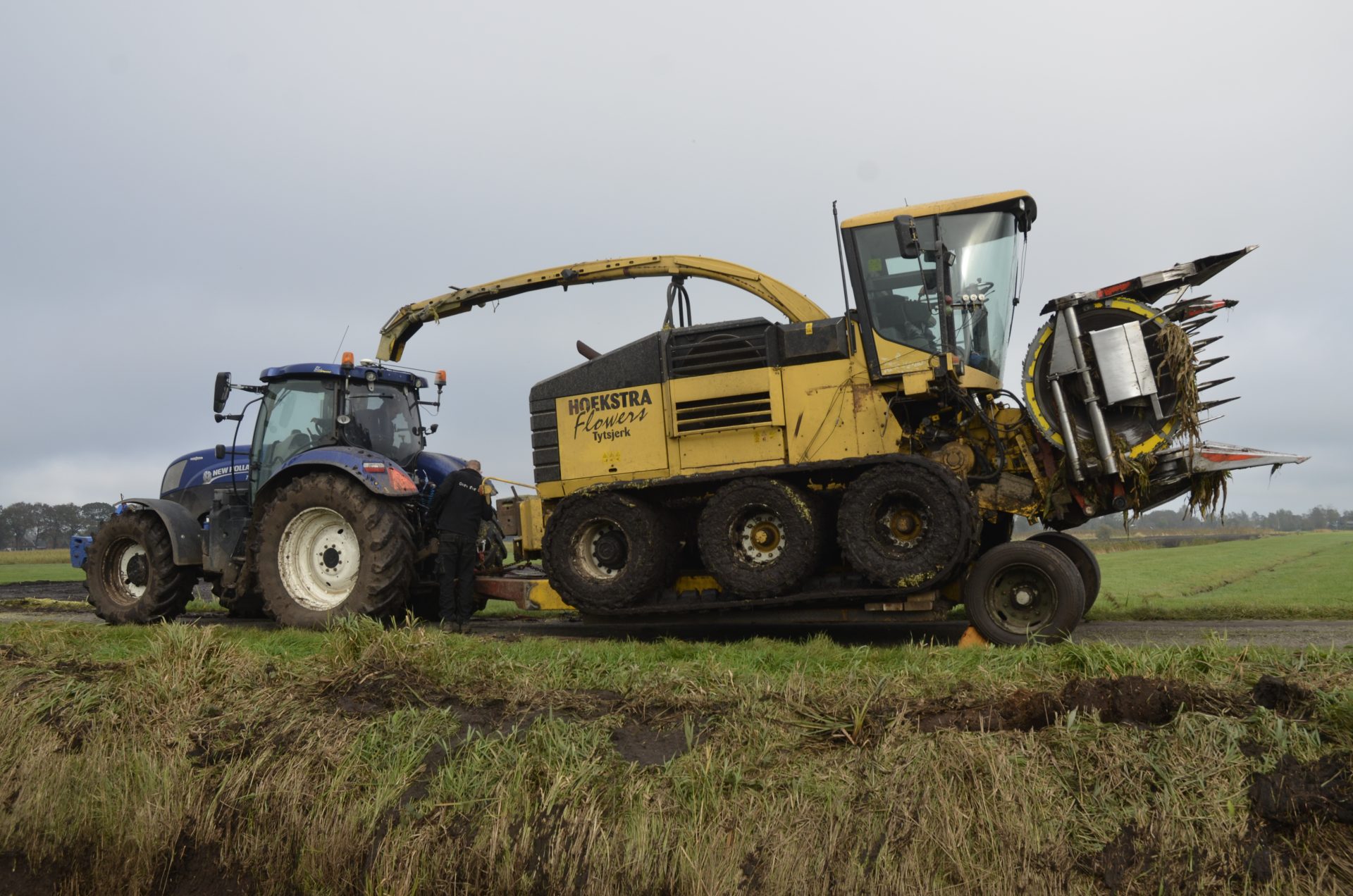
The 3.47m width of the modified New Holland forager is too wide to travel on public roads. The trailer was made by the Dutch contractor.
“As long as New Holland continues to supply FX parts, then considering the low number of annual hours I see no reason why it should not provide us with active service for many years to come.”
For more up-to-date farming news click here and subscribe now to profi and save 47%.

